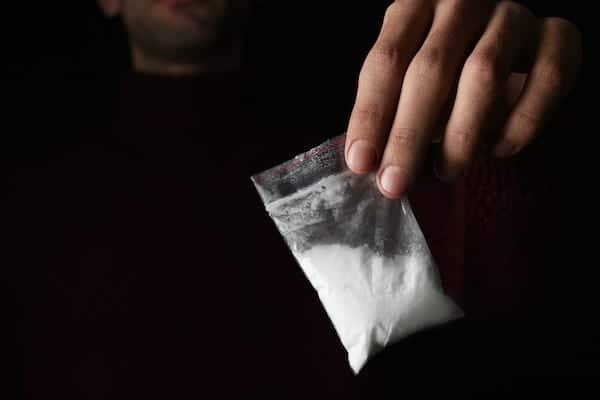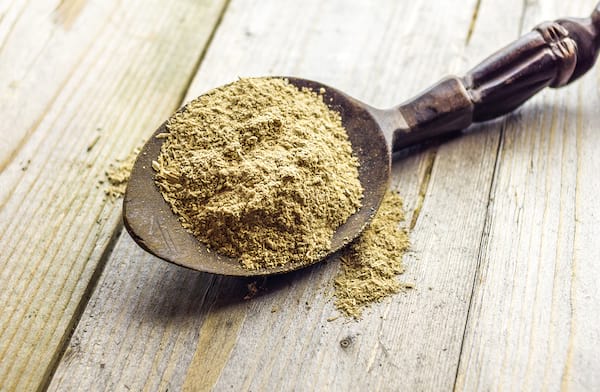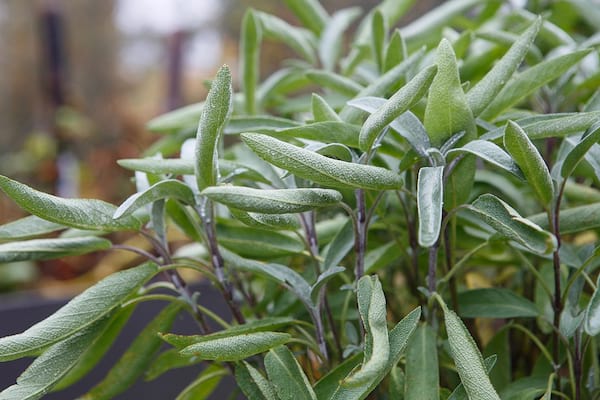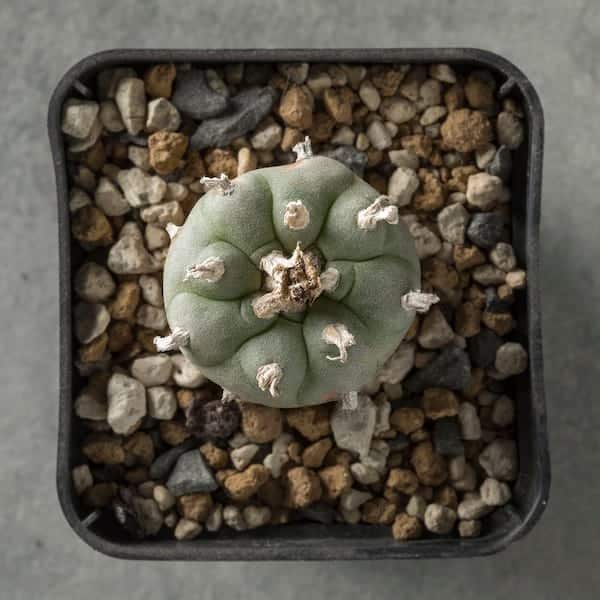Since the Industrial Revolution, drugs have been processed from plants. They are now also processed from basic chemicals or molecules, so there are synthetic drugs in addition to herbal or plant-based drugs.
Many plant-based drugs are widely used, including as a form of recreation.
While there is a widespread belief that herbal drugs are safer, this is not necessarily true. Plant-based drugs are intoxicating, dangerous, and addictive, just like synthetic or lab-produced drugs.
Humans Have Used Plants as Medicine & Intoxicants for Thousands of Years
There are about 400,000 species of plant in the world. Humans use 10 to 15 percent of these for various purposes, like food, tools, and medicine.
Some plants are also used as drugs, both for medicinal and recreational purposes. For thousands of years, many cultures have used hallucinogens for religious or spiritual rituals, as central nervous system (CNS) depressants to ease pain or lead to relaxation, and as stimulants to improve social feelings or physical energy and endurance.
With the advent of modern Christianity and European colonization of much of the world, drugs used in indigenous cultures were acquired and turned to different purposes, starting around the 18th century. While Western Europe has its own history of psychedelic, hallucinogenic, and intoxicating and addictive substances, many of the “natural” drugs abused recreationally today come from Central and South America, the continent of Africa, the Middle East, or Southeast Asia.
In the early 20th century, laboratories produced many chemicals based on natural substances. A backlash against pharmaceuticals and prescription drug abuse started in counterculture movements in the 1950s and 1960s, leading to wider Western exploration of the recreational effects of herbal or plant-based drugs.
This movement has ultimately shown that many of these substances are addictive. Herbal drugs can have harmful side effects, just like synthetic drugs that are abused for nonmedical reasons.
Popular Herbal Supplements & Plant-Based Intoxicants
Some common plant-based intoxicants have a long history of use, whereas others are newly popular.
Opium
History of Opium Use
Sap from the opium poppy has been used to get high and to ease pain since ancient Mesopotamia, around 3400 BCE, when the civilization started cultivating this flower. Sumerians passed information about the plant’s euphoric and analgesic effects to the Assyrians, who spread it to Babylon and Egypt. From there, use of the opium poppy spread around the Mediterranean.
Alexander the Great is credited with spreading opium to India and Persia. The drug was introduced to China by early Silk Road traders.
During the 1300s, opium disappears from any records in Western Europe, largely due to the Spanish Inquisition. In the 16th century, the drug makes a comeback as laudanum, an analgesic that became widely abused.
Opium use spread to North and South America through colonization. Morphine was developed as the first synthetic opioid, which led to the first opioid abuse epidemic in the United States after the Civil War.
Opium’s Effects & Dangers
Most opioid-based drugs in the modern abuse epidemic are synthetic. Heroin, oxycodone, and hydrocodone are all derived from morphine. Aside from heroin, many of these drugs are Schedule II, meaning they are tightly regulated by the U.S. federal government, but they still have important uses in medicine.
According to the Centers for Disease Control and Prevention (CDC), about 130 people die every day in the country due to opioid overdoses.
Opioid drugs trigger relaxation, painlessness, and euphoria. These pleasant feelings prompt people to continue use, and this often leads to a cycle of abuse, physical dependence, and eventually addiction.
Taking too much of these substances can lead to overdose, which is caused by stopped or irregular breathing.
Opium attaches to receptors in the brain responsible for breathing, along with pain responses and neurotransmitter release. Opioid overdose can be deadly.
Cannabis
This is the most widely abused illicit drug in the U.S., ranking just under alcohol for recreational substance abuse.
Both medical and recreational use of cannabis is becoming more popular all over the world, including in the U.S. States are passing laws that allow people to grow the plants in their homes, produce cannabis in various forms for sale, and have a small amount of the drug on their person if they are 21 or older.
Although it is still illegal at the federal level, the popularity of marijuana has led to an increased belief that the drug is safe. While it is very hard to overdose on cannabis, the drug is addictive and can cause side effects that change mental health.
History of Cannabis Use
Use of cannabis for medicinal purposes likely started on the Asian continent around 500 BCE. The drug was brought over to Central and South America by early colonists, probably for hemp, which can be used for rope and textiles.
It is a fast-growing plant, and early cultivated versions were likely low in tetrahydrocannabidiol (THC), the chemical that causes intoxication and euphoria.
Records of marijuana abuse are all over the ancient world. Cannabis came into the United States in the early 1900s, as more Mexicans emigrated into the country to work as farmers or ranch hands. Massive unemployment and social unrest during the Great Depression led to a backlash against both Mexicans and anything associated with their culture, including cannabis.
A lot of political and cultural back and forth in the U.S. led to popularization, then criminalization, of marijuana over the past several decades. Currently, a push to legalize the drug has also led to a push to change drug incarceration laws and release those who have been incarcerated due to cannabis sale or possession.
Effects & Dangers of Cannabis
Because it a natural plant, many people falsely believe that marijuana is a safe drug to use. Like cigarettes, opioids, and alcohol, marijuana is addictive and can cause harm.
Cannabis highs start with a little stimulation. Many people report feeling giddy or euphoric first. This then turns into tranquility, relaxation, and sedation. From there, some people experience contentment or drowsiness, while others may experience anxiety and paranoia.
As the drug wears off, some people do not feel much, while others have increased depression and cravings for the drug.
Repeated abuse can lead to addiction.

Coca
Cocaine comes from leaves of the coca plant, native to South America. Indigenous people in the area have long chewed the leaves for their stimulating effects, but few people abuse this stimulant in this form in the modern world.
In Western cultures, the leading problem is powdered cocaine, a synthetic drug derived from the coca plant.
Cocaine is a Schedule II drug in the U.S., marking that it has some medical uses. The substance was originally developed as a local anesthetic. It is still used in this way for specific ear, nose, and throat surgeries.
Cocaine Abuse
Illicit cocaine is manufactured and abused in much larger quantities than pharmaceutical cocaine.
The white powder is typically snorted. It may also be mixed with water and injected intravenously, rolled into a cigarette and smoked, or mixed into other drugs and abused.
In the 1980s, a trend of speedballs (a mixture of cocaine and heroin) led to many overdoses.

Datura
Commonly called Jimson weed, datura is a toxic plant. It may cause hallucinations and intoxication, but it is more likely to lead to poisoning and hospitalization.
The leaves and seeds have been used as medicine in the past to treat these conditions:
- Asthma
- Cough
- Cold and flu
- Swine flu
- Nerve diseases
Chemicals in Jimson weed include atropine, hyoscyamine, and scopolamine. These interfere with neurotransmitters, especially acetylcholine, in the brain and nerves. There is little scientific research to show how effective datura is at managing these conditions.
Datura Overdose
It is possible to overdose on datura, and this can be serious. Since it is a naturally occurring drug, it can be difficult to get the “correct” dose, especially for recreational abuse.
The following are signs of overdose:
- Dry mouth and extreme thirst
- Vision problems
- Rapid heartbeat
- Nausea and vomiting
- Hallucinations
- Elevated body temperature
- Confusion
- Breathing problems
- Loss of consciousness
- Seizures
Kava
Also called kava kava, this plant is a member of the nightshade family, so it is distantly related to peppers and tomatoes.
The substance has been consumed in Pacific Island nations for hundreds of years as part of religious and cultural ceremonies. Kava’s effects mostly induce relaxation, similar to the effects of opioids or alcohol.
The chemicals found in kava are called kavalactones, which account for 3 to 20 percent of the root of the plant’s dry weight. Kavalactones have been reported as useful in treating these conditions:
- Anxiety
- Pain
- Neuron damage
- Cancer risk, as some studies in mice
While there are few studies on kava’s medicinal effects, the drug does appear to act on gamma-aminobutyric acid (GABA) receptors in the brain. These are also triggered by sedative drugs like benzodiazepines as well as alcohol. While kava may be useful in treating insomnia or anxiety, like other sedative drugs, it may also be addictive.
Status of Kava
Kava is not illegal in the U.S. since it is sold as a dietary supplement.
The drug can be taken as a liquid or tincture, brewed into a tea, or swallowed as a capsule. There is no regulated medical dose of the drug, so it is hard to know how much is safe.
There are reports of liver toxicity associated with kava supplements, which led several European countries and Canada to ban the drug.

Kratom
This plant-based drug is native to Southeast Asia.
Depending on the dose, kratom can produce stimulant or depressant effects. Most people who take the drug are seeking a “safer” high than with opioids, or they are trying to use the drug without any oversight to end their addiction to an opioid substance.
Sometimes, kratom is smoked or eaten. The main methods for taking it are to:
- Brew the dried leaves into a tea, mix the powder into water, and drink it.
- Take tablets or pills as “dietary supplements.”
Effects of Kratom
The two chemicals in kratom, mitragynine and 7-α-hydroxymitragynine, produce pleasure, sedation, and decreased pain. Mitragynine can produce stimulant effects like caffeine.
Although kratom is not illegal in the U.S., the Food and Drug Administration (FDA) and Drug Enforcement Administration (DEA) have issued warnings about these powders and supplements. They started a conversation about placing kratom in the drug schedule to restrict its use.
Effects of kratom include the following:
- Queasiness
- Itchiness
- Perspiration
- Dry mouth
- Constipation
- Increased urination
- Reduced appetite
Serious side effects include hallucinations or seizures, which can occur at large doses. There are reports of overdose deaths involving kratom, but these often involve other drugs, particularly opioid substances.
Salvia
This is a naturally occurring drug found in a plant called salvia divinorum, which causes hallucinogenic effects like LSD.
It is believed to have a low incidence of side effects and low addiction potential, but there is little medical research on the substance. Salvia is not widely abused, so problems from abusing this substance are not well understood.
The main chemical in salvia is salvinorin A, a kappa opioid receptor (KOR) agonist. This may impact dopamine, a neurotransmitter that can elevate mood, improve physical energy, and (in larger amounts) cause hallucinations.
Originally, salvia was used by the Mazatec tribe in Central America. They brewed it into tea as part of religious rituals.
Most reports of salvia use in North America involve substance abuse. Although there are few reports of overdose, the drug’s long-term effects are not known. It is believed to be dangerous.

Betel Nut
Recreational use of betel nut originated in Asia and parts of the Pacific.
Chewing this plant leaves a red or purple residue around the mouth. The plant is sometimes dried, and lime or tobacco are then added for flavor and another drug boost. This is sold as betel quid.
People in the region have been chewing betel nut for a quick burst of energy for about 2,000 years. The World Health Organization (WHO) estimates that about 600 million people use this drug today, making it one of the most popular psychoactive substances around the globe, after alcohol, tobacco, and caffeine.
While betel nut is not widely abused in Western countries, it may spread further with the rise of interest in herbal supplements and natural remedies. The drug provides a burst of energy, likely because of natural alkaloids that release adrenaline. Chewing betel nut can also cause feelings of euphoria and increase one’s sense of well-being.
Effects of Betel Nut
Although there is little medical information on betel nut’s dangers, some reports have found it might ease cardiovascular and digestive problems with its anti-inflammatory properties. The drug may promote wound healing too.
It is considered an addictive substance. It has been associated with a high risk of oral cancer due to how betel nut is consumed. There are also some studies reporting that it can actually increase cardiovascular damage, metabolic syndrome, and obesity rates.
Khat
Also spelled qat or chat, this is an evergreen shrub that is native to the Horn of Africa and the Arabian Peninsula. This plant produces stimulant effects due to the presence of cathinone and cathine, which can also trigger a mild euphoria due to the release of more serotonin into the brain.
Yemen, Somalia, and Ethiopia cultivate and use khat the most.
Cathinone is currently a controlled substance in much of the Western world, including the United States. While khat has entered the U.S. and been abused recreationally, it is much rarer than synthetic cathinone abuse, which became infamous in the country with the rise of bath salts.
Calea Zacatechichi
Sometimes called the dream herb, there has been an increase in consumption of this substance in dietary supplements, mainly to treat diabetes. Calea has also been used in folk medicine for thousands of years.
There has been an association between using calea and suffering kidney problems. One study showed that taking calea long term for hypoglycemia could lead to kidney damage. Further scientific research is needed to understand the link between calea, renal damage, and diabetes, which can also lead to renal problems.
Use in the U.S.
This plant is native to Central America, where it has been used as an herbal medicine by indigenous groups for thousands of years. Recent trends in finding new herbal medicines and selling those as supplements in the U.S. has led to an increase in Western users.
Because it is sold as a supplement, calea use in the U.S. is not restricted or controlled. This has led to incidents of physical harm from toxic interactions.
Peyote
A spineless cactus native to Central America, the buttons or small buds from this plant have been used in religious rituals by indigenous people living in the area for thousands of years. Peyote, also called mescaline, produces hallucinations and euphoria.
In recent decades, peyote has been abused to get high. The lack of cultivation of the cactus and the limited territory the plant inhabits mean that substances sold as mescaline on the black market are most often either adulterated version or a different drug altogether (often PCP or LSD).
Both peyote and mescaline are listed as Schedule I substances under the Controlled Substances Act (CSA) of the U.S.
Risks of Peyote Abuse
While it is not considered addictive, like many hallucinogens, peyote can cause serious physical and mental health side effects that could be dangerous. Repeated abuse of the drug can be problematic. Side effects include the following:
- Numbness
- Tension or anxiety
- Muscle twitches
- Rapid reflexes
- Physical weakness and trembling
- Impaired motor coordination
- Dizziness
- Pupil dilation
- Nausea and vomiting
- High body temperature, sweating, and heat stroke
- Chills or shivering, similar to the flu
- Appetite suppression
- Distorted vision
- Hallucinations, especially visual or auditory
- Synesthesia, or several senses overlapping
- Joy, exhilaration, panic, or terror
- Loss of a sense of reality
It is possible to suffer heat stroke or seizures due to this drug.

Ayahuasca
While ayahuasca has been used for thousands of years in religious and shamanic rituals in Amazonian tribes due to its hallucinogenic properties, this intoxicating tea is becoming a recreational luxury for many in modern society. Trips to South America to visit a shaman and take ayahuasca are becoming a trendy tourist activity for upper middle-class Westerners, especially young American adults.
Due to the main two chemicals in ayahuasca — Banisteriopsis caapi and Psychotria viridis, which contains N,N-dimethyltryptamine (DMT) — this plant is a powerful hallucinogen. DMT combines with Banisteriopsis caapi, which acts as a powerful antidepressant, to be digested more slowly and influence brain chemistry for longer.
Effects of Ayahuasca
People who have participated in the ayahuasca ritual report having long-term positive effects, such as less depression or anxiety, feeling more connected to the world, and increased energy. The drug may influence brain health, but there is little medical information on this.
There is no guarantee that you will have a favorable reaction to ayahuasca. As with other hallucinogens, it is possible to have a bad trip. You may experience high anxiety, paranoia, fear, or nightmarish hallucinations. You may feel physically sick from nausea or heat exhaustion.
Like other hallucinogens, ayahuasca can raise blood pressure and heart rate. You may have a bad cardiovascular reaction if you have an underlying heart problem.
Psilocybin or Shrooms
Like many other plant-based drugs, shrooms or magic mushrooms have been used by indigenous groups in Central and South America for thousands of years. They were sometimes called God’s flesh because they could treat some illnesses and were used in shamanic or spiritual rituals.
In recent decades, the chemicals psilocybin and psilocin, found in shrooms, have been used for increasing recreational purposes. Albert Hofmann, who is credited with discovering LSD, isolated these chemicals from magic mushrooms and began using them in a synthetic form.
Most people in modern Western societies tend to get dried mushrooms and brew them into a drink. The chemicals take about 20 minutes to two hours to take effect. The effects can last for three to six hours.
Effects of Shrooms
Heightened sensory perceptions, hallucinations, and the inability to differentiate fiction from reality are sought-after effects of shrooms.
The drug can also cause harm to the body, including the following:
- Tension, anxiety, and restlessness
- Sense of detachment from the body
- Nausea, vomiting, and abdominal cramps
- Muscle relaxation, weakness, and twitching
- Numbness
- Heart rate changes
- Elevated body temperature
- Feelings of physical heaviness
- High blood pressure
- Alternating between sweating and cold chills

Abuse of Herbal or Plant-Based Drugs Is Dangerous
Although the drugs listed above are plant-based, many of them are addictive. All of these herbal drugs can cause harmful side effects that can cause lasting physical and mental damage or even death.
Whether these drugs are technically legal or federally illegal, abusing them is dangerous. They may have some known or reported medical uses, but taking them without supervision from a doctor is considered substance abuse and could lead to serious health effects, including death.
Plant-based drugs aren’t safe. They are addictive, just like synthetic drugs.
Their continued use can damage virtually every area of a user’s life.
If you have abuse these drugs and cannot stop, help is available. If you feel sick when you try to quit using them, or you feel like you need to take more to get the original effects, you’re likely struggling with a growing tolerance and even physical dependence on the substance.
Addiction is signified by compulsive use of a substance despite a desire to stop use. While you may be unable to stop using these herbal drugs on your own, you can achieve recovery with the right help.
Evidence-based treatment will address the condition on all fronts, helping you to identify the issues that led to your substance abuse and to develop coping mechanisms so you can live a healthy, sober life.
- How Do People Choose What Plants to Use? From Medicine to Rituals. (January 2017). Faculty of Science, University of Copenhagen.
- Psychoactive Botanicals in Ritual, Religion, and Shamanism. (January 2005). Ethnopharmacology: Encyclopedia of Life Support Systems (EOLSS).
- Opium Throughout History. PBS Frontline.
- Understanding the Epidemic. (December 19, 2018). Centers for Disease Control and Prevention (CDC).
- What Are Marijuana Effects? (July 2019). National Institute on Drug Abuse (NIDA).
- Marijuana. (November 2018). History.com.
- Marijuana. (October 2013). Center for Substance Abuse Research (CESAR).
- What Is Cocaine? (May 2016). National Institute on Drug Abuse (NIDA).
- Jimson Weed. RXList.
- Kava Kava: Benefits, Side Effects, and Dosage. (February 2018). Healthline.
- What Is Kratom? (April 2019). National Institute on Drug Abuse (NIDA).
- Salvia: What Are the Effects? (January 16, 2019). Medical News Today.
- How Dangerous Is Betel Nut? (September 2016). Healthline.
- Khat (Plant). (June 2018). Encyclopedia Britannica.
- Evaluation of “Dream Herb,” Calea Zacatechichi, for Nephrotoxicity Using Human Kidney Proximal Tubule Cells. (September 2016). Journal of Toxicology.
- Peyote. (October 2013). Center for Substance Abuse Research (CESAR).
- What Is Ayahuasca? Experience, Benefit, and Side Effects. (June 2019). Healthline.
- Psilocybin/Psilocyn. (October 2013). Center for Substance Abuse Research (CESAR).
Questions about treatment options?
Our admissions team is available 24/7 to listen to your story and help you get started with the next steps.

